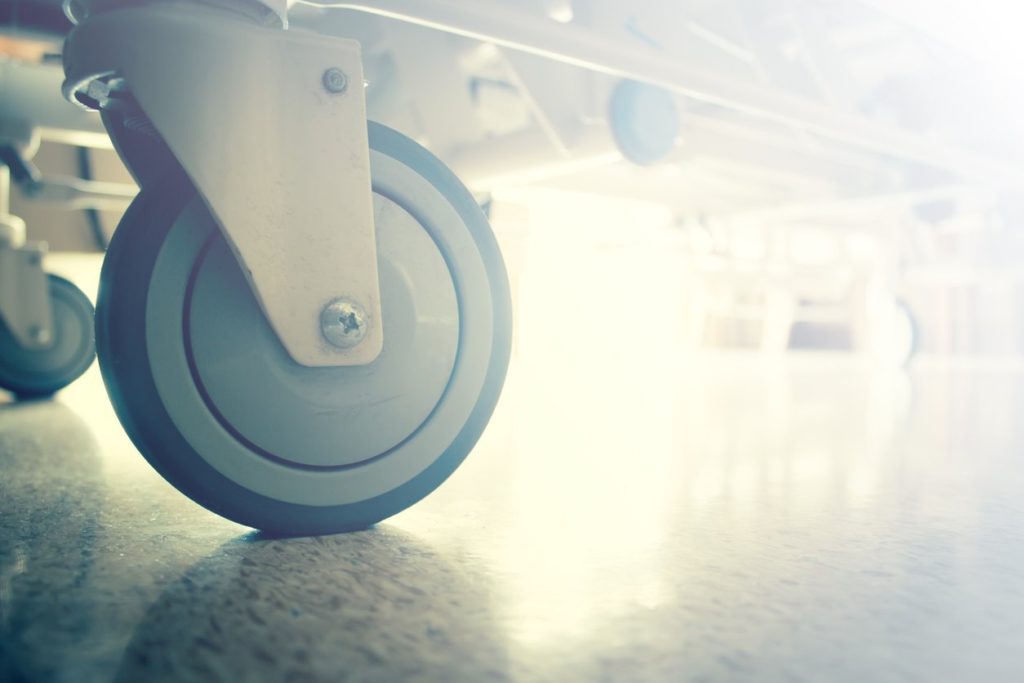Most hospitals utilize portable x-ray and portable ultrasound daily. The ability to provide point-of-care x-ray and ultrasound imaging is an invaluable way to reduce costs, help patients, and increase the overall quality of care.
Advancements in technology have made delivering portable nuclear imaging as easy as ultrasound or X-Ray. Which begs the question: Why in the world are hospitals and technologists not leveraging portable nuclear imaging in the same way?
Point-of-care nuclear imaging is safer for patients, improves care, and helps to protect the hospital from costs associated with HAI’s (healthcare-associated infections) and readmittance.
Additionally, the Coronavirus pandemic is causing many hospitals to take a fresh look at their processes, procedures, staffing, and equipment needs. We’ve seen firsthand how easily “department-centric” imaging can grind to a halt.
Something as simple as the ability to adapt and image in a negative pressure room can be the difference between being able to provide nuclear imaging or not.
In this post, we take a look at why portable nuclear imaging should be a part of our new normal.
Portable Nuclear Imaging Technology is Here
Portable nuclear imaging exists and is being used throughout the country. The Ergo is a general-purpose, solid-state, large field of view gamma camera that was designed to provide point-of-care imaging.
Now in its third generation, this portable nuclear medicine imaging system features a lithium-ion battery and can easily be wheeled to different floors, brought to the patient’s bedside, used in the ICU, and more.
Just like ultrasound or x-ray, the Ergo is portable, and you take it where it’s needed. The camera can do bone scans, lung perfusion studies, HIDA scans, gastric emptying, GI bleed, brain flow studies – almost every general nuclear medicine scan you need can be performed portably with the Ergo.

Why Portable Nuclear Imaging Matters
Now more than ever, portable nuclear imaging is vital for hospitals and imaging centers. Here’s why:
1. It Will Keep Your Department Running
Portable imaging gives your department flexibility. The COVID-19 crisis has taught us all how the ability to adapt is a critical requirement for hospitals. Being stuck in a single location within the facility limits radiology, and the ability to image throughout the hospital can keep your department running.
2. It’s Better for Patients and Families
The benefits of portable nuclear imaging to a patient are similar to portable ultrasound and x-ray. Namely, for specific individuals, the process of getting a nuclear medicine scan can be arduous, and the ability to obtain bedside imaging results in far less stress.
Additionally, traumatic events, such as the need for a brain-death scan, can be handled much easier and with more considerable discretion and compassion utilizing the Ergo at the patient’s bedside.
3. It Reduces the Risk of Patient Transportation
As we wrote in a recent post, patient transport is inherently risky for hospitals and the patients under their care. Accidents, infection spread, and reduced patient health as a result of transport are relatively common and can severely set back recovery times.
For any clinic, managing or mitigating that risk is vital. Not only is it essential for the care of the patient, but because hospitals increasingly are held responsible for any consequences of those risks.
Where CMS used to cover incidents such as infections in patients, they are now refusing to, putting the liability on the hospital. This makes limiting patient transportation and its inherent risks a priority.
It makes sense to limit patient transport where possible, and implement point-of-care therapies, tests, and diagnostics. Portable imaging is one way to reduce infection spread and achieve better outcomes for patients and hospitals.
Most critical imaging needs can be catered for at the patient bedside. For hospitals, this can be an investment with great returns.
Now is the Time
Does your hospital or imaging facility offer portable nuclear imaging? If not, why? The technology exists and right now it is helping facilities stay nimble and fight the spread of COVID-19.
As we come out of this crisis and look for better ways to serve our patients, you owe it to yourself to explore how portable nuclear imaging could work at your facility.
Now is the time to change, and portable nuclear imaging should be part of our new normal.




